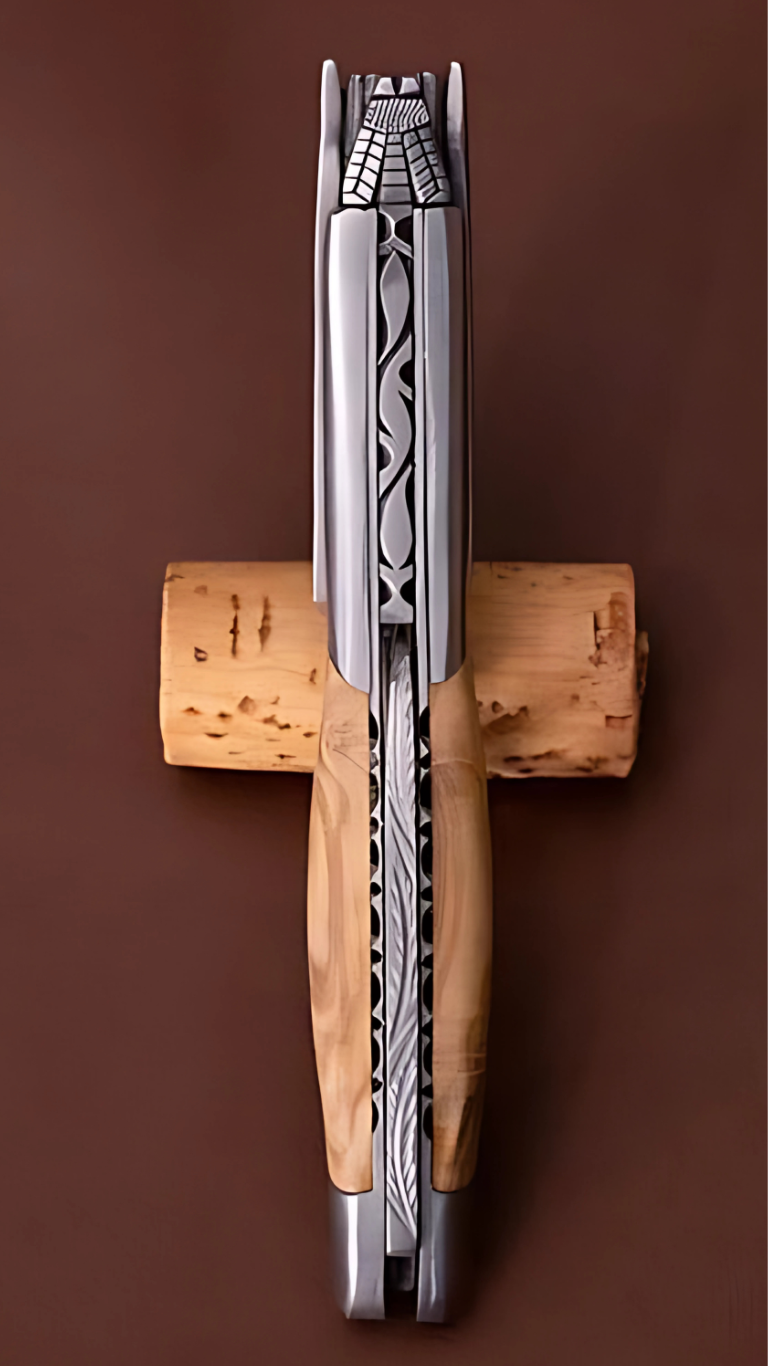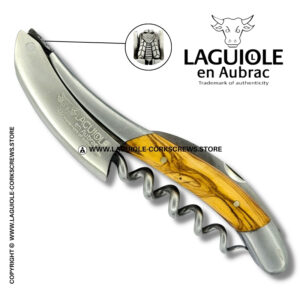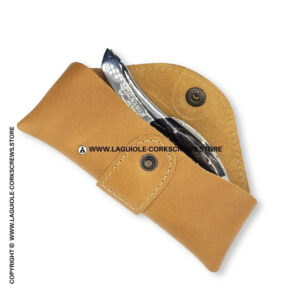Understanding the Ritual
For wine lovers, uncorking a bottle is more than just removing an obstacle. It’s the beginning of a tasting experience — a moment that deserves grace, control, and beauty. With a Laguiole en Aubrac corkscrew, this ritual becomes fluid. Each tool is crafted by a single artisan in France, combining form and function to serve the wine with elegance. Let’s explore how to use it properly and why every detail of the tool enhances your wine ritual.
Know Your Tool: The Anatomy of a Sommelier Corkscrew
A Laguiole en Aubrac corkscrew is composed of three key parts:
- The foil cutter blade: a short, serrated knife used to remove the capsule around the bottle neck.
- The forged worm: a five-turn conical screw designed to penetrate the cork cleanly and prevent breakage.
- The single-pivot lever: this allows the cork to be extracted in one smooth motion, without repositioning.
Each element is precisely adjusted for fluidity and balance, making the process intuitive, even for non-professionals.
Step 1: Cut the Capsule Cleanly
Unfold the small serrated blade integrated into your corkscrew. Hold the bottle securely, and use the blade to make a circular cut around the neck of the bottle, just below the lip. This avoids wine contact with the capsule and gives a cleaner finish.
Remove the top of the foil and close the blade carefully before proceeding. If needed, wipe the top of the cork with a clean cloth to ensure no residue remains.
Step 2: Insert the Worm
Hold the corkscrew firmly and position the tip of the worm in the center of the cork. Begin turning clockwise with steady, even pressure. The spiral should enter smoothly and remain perfectly vertical, aligned with the bottle’s neck. Insert the worm until one turn remains visible. Do not screw all the way through the cork — this helps avoid cork particles falling into the wine.
This forged, tapered design is specific to Laguiole en Aubrac. It respects the cork’s structure and ensures long-term integrity. (→ Internal link: /how-to-recognize-authentic-laguiole-corkscrew)
Step 3: Lift the Cork in a Single Motion
Place the lever’s notch firmly against the neck of the bottle. Keep the corkscrew straight and gently pull upward using the handle. The leverage is calculated for a smooth, progressive extraction. You’ll feel the cork slide upwards without any jolt or resistance.
The single-pivot system used by Laguiole en Aubrac is deliberate — it eliminates the need for awkward repositioning, resulting in a purer, more elegant gesture.
Respect the Gesture
Don’t rush. One of the hallmarks of a true sommelier is patience. Hold the bottle at a slight angle, apply even tension, and let the cork rise naturally. Once the cork is nearly out, a gentle twist by hand completes the movement. There’s no need to yank or force. With a Laguiole en Aubrac corkscrew, the action should feel effortless and satisfying.
Every motion is part of the ritual — from blade to lever, from tension to release. The quality of the experience is just as important as the result. Whether you are hosting friends or enjoying a quiet dinner at home, the elegance of the gesture adds something special to the moment.
Tips for a Perfect Opening Ritual at Home
Before opening your bottle, make sure it is at the right temperature and well-rested, especially for older wines. Use a soft cloth to hold the neck of the bottle for better grip and to avoid fingerprints. Once opened, wipe the rim clean to avoid wine droplets or oxidation. Always place your Laguiole corkscrew back into its sheath or box after use to preserve its condition.
These small gestures protect the wine, the object, and the experience. They create a connection between you, the wine, and the craft behind the tool you’re using.

Why the Laguiole en Aubrac Corkscrew Changes Everything
The difference lies in the tool’s balance, design, and craftsmanship. Each corkscrew is handcrafted in France by a single artisan. The materials — olivewood, horn, fossil ivory — add natural warmth and weight. The worm is forged, not stamped. The lever is adjusted for smoothness, and the spine can be decorated with fine chisel work or engraving.
This isn’t just about opening bottles. It’s about enjoying the gesture. The corkscrew becomes a companion to your tasting rituals — elegant, reliable, and personal. Its presence on the table is both functional and symbolic. It represents a certain way of living: thoughtful, slow, and beautifully executed.
Conclusion: From Gesture to Experience
Using a Laguiole en Aubrac corkscrew is a matter of finesse, not force. Each movement has been thought through — not just by designers, but by craftspeople who know wine and respect its traditions. The result? An object that turns a simple act into a satisfying, memorable moment.
It’s not about speed — it’s about connection. Connection to your wine, to the person you’re serving, to the tools you choose to surround yourself with. A Laguiole corkscrew is an invitation to slow down and savor.






